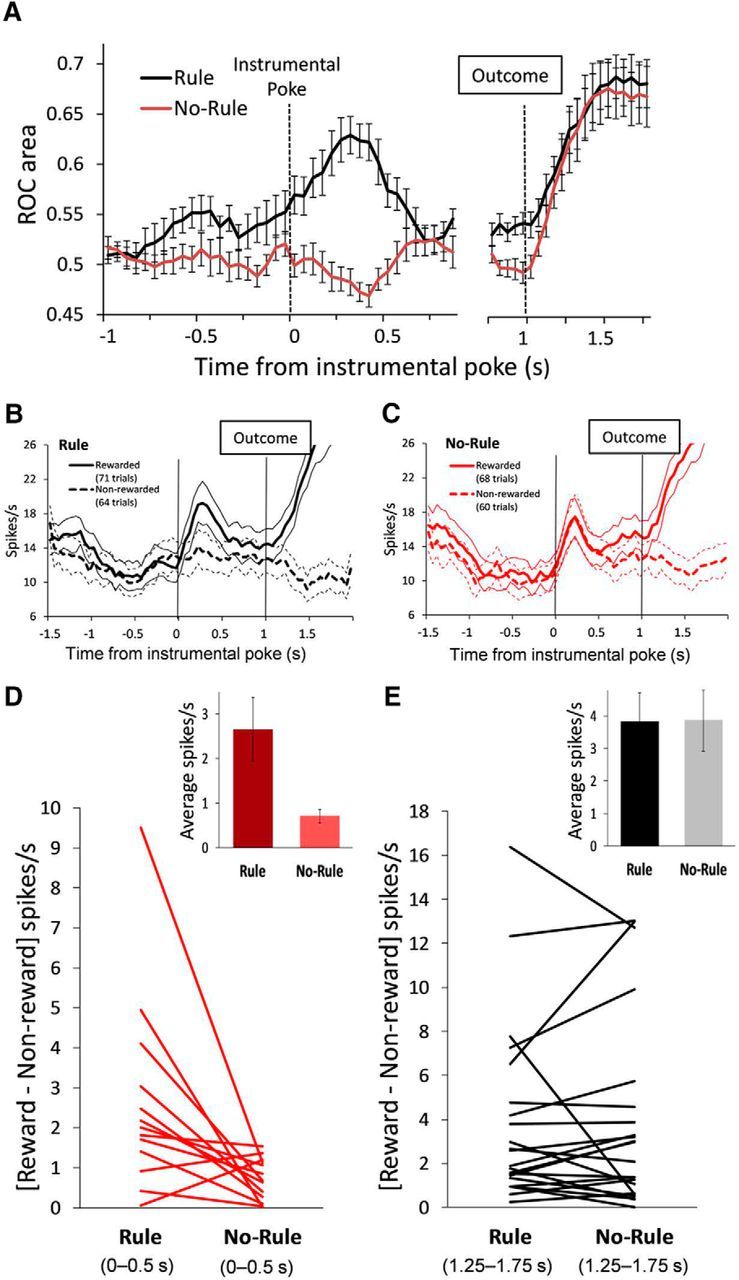Figure 4.

Outcome anticipation-related activity of PFC single units is modulated by the outcome condition. A, Time course showing units' selectivity for current trial outcomes during the Rule condition compared with the No-Rule condition. Plots represent (mean ± SEM) the auROC curve of the population of selective units significantly correlated to current trial outcomes during the Rule condition. PFC units showed a greater selectivity to anticipate trial outcomes when these depended on animals' actions (Rule condition, paired t test, t(12) = 7.29, p = 0.000, average across time bins from 0 to 0.5 s). The time axis is split to better represent the different number of selective units before (13 of 42 units) and after (22 of 42 units) the outcome. B, C, An example of a prefrontal single unit during the Rule (B) and the No-Rule condition (C). Units' activity anticipates current trial outcomes during the Rule, but not during the No-Rule, condition. Thick and dotted line plots represent the mean firing rates (spikes/s) of rewarded and nonrewarded trials, respectively. Thin line plots represent the corresponding ±SEM. Vertical lines indicate the instrumental poke and outcome time events. D, E, Net difference in the firing rate (spikes/s) between rewarded and nonrewarded trials for every selective unit during the Rule compared with the No-Rule condition, before (D; average from 0 to 0.5 s; 13 units) and after (E; average from 1.25 to 1.75 s; 22 units) the outcome. Insets show that the difference in the firing rate (average of selective units) between rewarded and nonrewarded trials is significantly higher in the Rule compared with the No-Rule condition before (t(12) = 2.78, p = 0.016, paired t test), but not after, the outcome.
